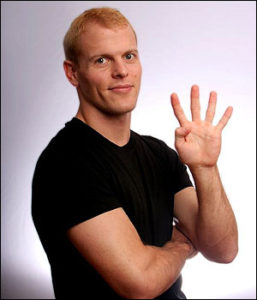It’s hard to escape how enticing the title of Tim Ferriss’ book sounds: The Four-Hour Workweek. Did you say four hours? Sounds impossible, right? If you’re like me, you’re one of the millions who’ve picked up Ferriss’ book because you were tired of putting in all those long hours and not making nearly enough for it.
Want to know exactly what a “Four Hour Workweek” means and how the heck it’s achieved? Read on for a simple guideline that answers most of the head-scratching questions you may have about this global phenomenon:
Who Is Tim Ferris?

Tim Ferriss is an entrepreneur, author, and businessman who has been named one of the “Most Innovative Business People” by Fast Company. He started by creating his own company and selling it to an equity firm to become an author and investor. The Four Hour Workweek was written based on Ferriss’ experiences working with his first company; his book quickly became a New York Times bestseller. In addition to publishing, he’s an advisor to many successful startups and he guest lectures at Princeton University.
What exactly is a “four-hour workweek?”
While the book doesn’t necessarily promise that you can get all of your work done in only four hours a week, it does provide all the tools necessary for “simplifying your life, automating your work, being more effective with your email, cutting down on interruptions, and using your time to actually achieve something meaningful.” Ferriss’ method is all about creating infrastructure and setting rules. For example, a popular suggestion from the Four Hour Workweek is checking your email only twice a day. He even suggests adding an auto-response to emails that says, “I check my email infrequently, so here’s an FAQ you can read that will probably answer your questions.”
The biggest suggestion the book makes is the idea of outsourcing most of your work. Using what he calls “virtual admins” to handle a lot of the time-consuming paperwork is the most effective way to cut down your total work time. “Indian and Chinese VAs will run $4-$15 per hour, the lower end being limited to simple tasks and the higher end including the equivalent of Harvard M.B.A.s,” Ferriss writes.
Other useful advice includes arriving to work with a clear agenda, ending meetings on time, working from home, and learning to stop work by a certain time every day.
Does It Work?
The four-hour workweek is by no means a miracle cure. There is still much hard work and dedication to be done to achieve the luxury of cutting your work week down by 75%. However, there are still many hardworking, motivated professionals that praise Ferriss’ revolutionary model: “I was working 80-90 hour weeks when I read The 4-Hour Workweek,” Josh Steimle writes in Forbes. “Tim taught me to sever the mental connection between time and work. Once I started looking for ways to make money without spending my time–automating the process–I was able to make money with minimal time on my part.”
It’s all about automating your work process, and letting the money-making happen even when you’re not putting in the hours. That’s what Tim Ferris and The Four Hour Workweek are all about. Does it work? It’s all up to the reader to decide how best to implement Ferriss’ groundbreaking practice into your life.





